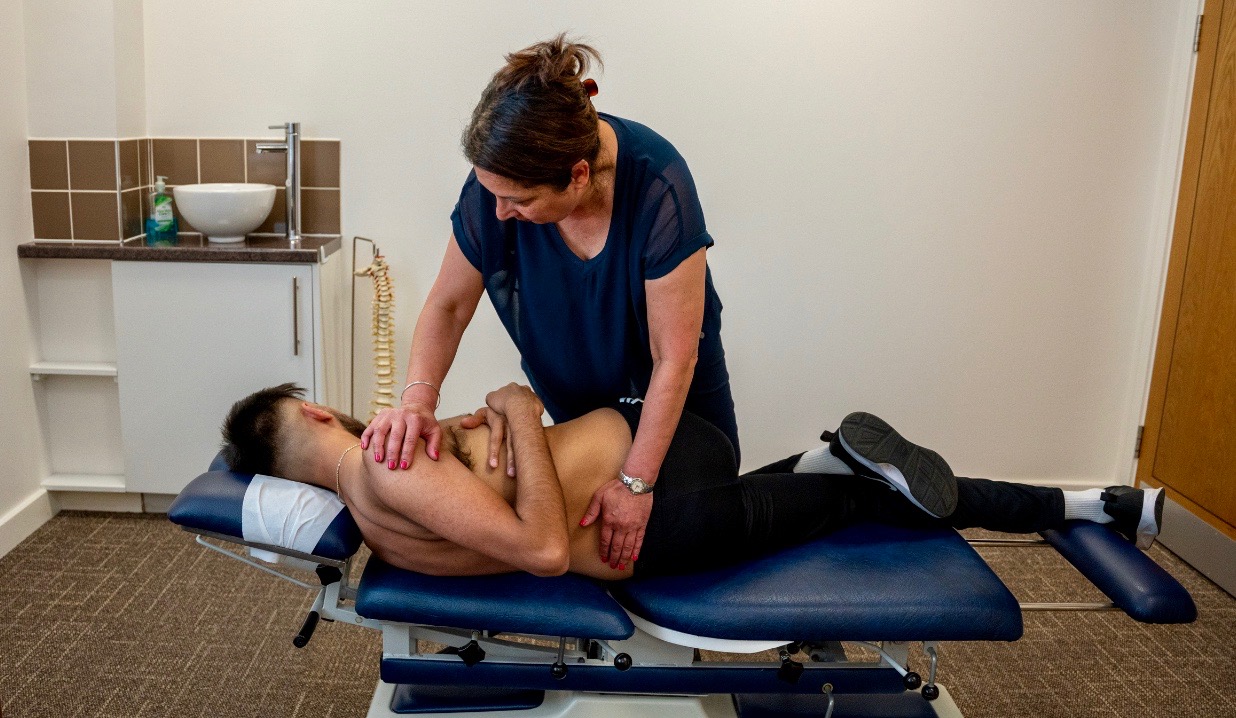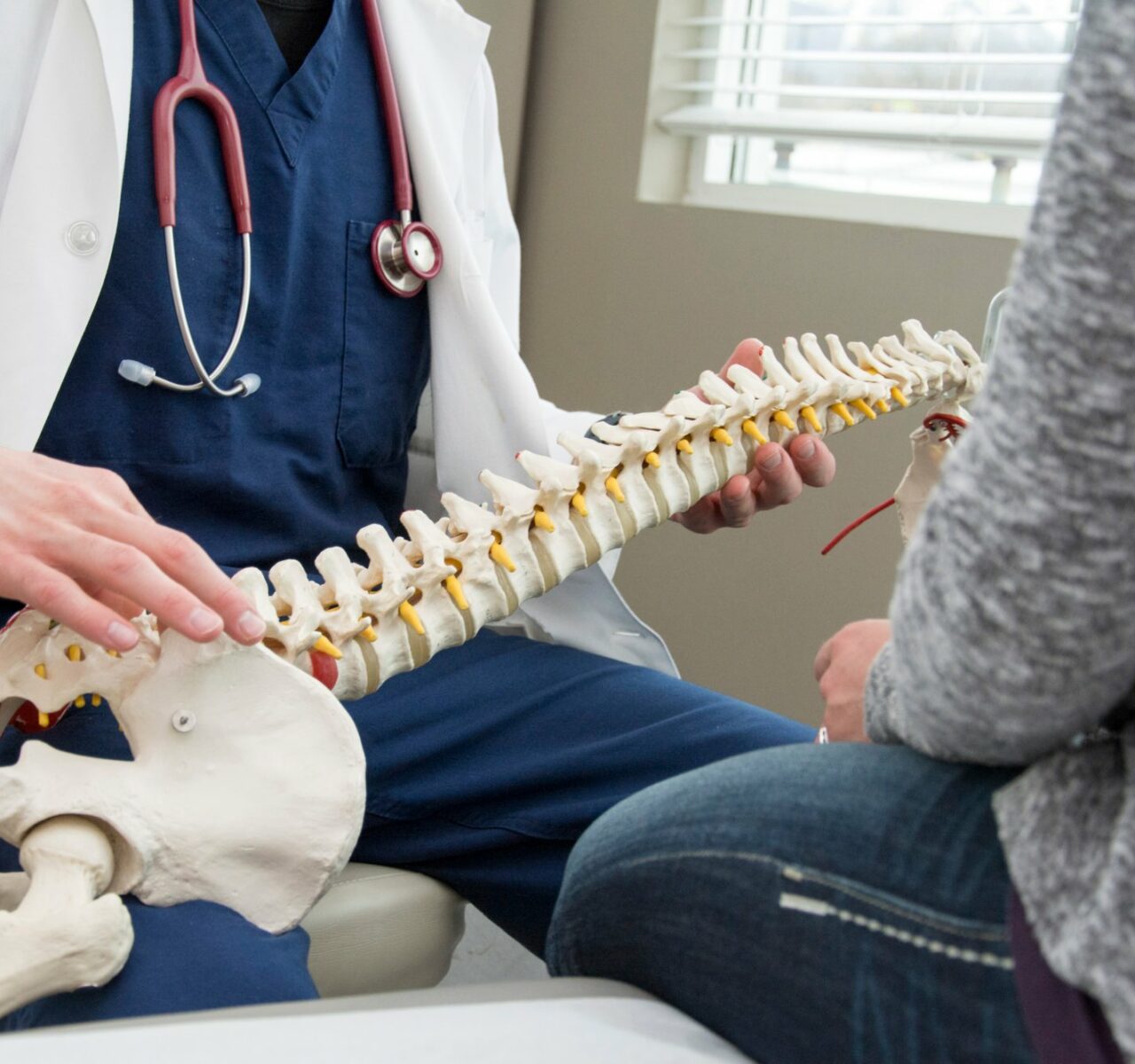
Chiropractic Awareness Month
What is chiropractic?
Sacroiliac joint syndrome, also known as sacroiliac syndrome and sacroiliac joint sprain, is a common cause of back pain.
It is treated regularly in our chiropractic clinics using specific chiropractic mobilisation and manipulation techniques, which has proven to work for hundreds of our patients. Even though the injury causes inflammation of the sacroiliac joint, it is not the same as sacroiliitis.
Performing motion palpation of the sacroiliac joint will give the chiropractor an important clue to what needs to be done to help. It will tell us if the joint is moving too much or too little. The mechanism of injury and how long it has been present will give us an idea of the healing time of the sacroiliac joint sprain.

Want to know more? Request a Callback
Or give us a call, to find out how we can help you with Sacroiliac Joint Syndrome and Chiropractic Treatment.
Book an Appointment
Schedule an appointment for Sacroiliac Joint Syndrome and Chiropractic Treatment tailored to your needs.
Sprains of the sacroiliac joints are caused by excessive movement, this can occur in a one-off event such as a fall or car accident or more commonly developed over time due to repetitive microtrauma.
Excessive stress on the joint capsule causes microscopic damage to the ligaments surrounding the joint resulting in the joint becoming inflamed and painful. The body reacts to this by instructing the muscles to tighten up to prevent more damage but this muscle spasm tends to last for longer than it is useful, resulting in more pain.
It is common to get referred pain from the muscles that go into spasm. The most commonly involved are the piriformis, gluteal (buttock) and psoas muscles.
The sacroiliac (SI) joints are located on either side of the spine just below waist height. Looking from behind onto somebody’s back you can see two dimples on either side just below the waist, which is where the SI joints are located.
The joints are between the two pelvic (iliac) bones, which join on to the sacrum, forming the two sacroiliac or SI joints. Inside the joint is a system of ridges and grooves. The sacral side has a concave groove and the iliac side has a convex groove, which limits the movement.
The joints also have a complex system of ligaments, which further strengthen the joints. The main function of the sacroiliac joints is to transmit forces between the upper body and the lower limbs. They are designed to withstand large stresses.
Women tend to be affected more often than men since they tend to have more flexibility of their ligaments. The SI joints tend to lose their flexibility and we are less likely to sprain our SI joints as we get older.
Until recently the main anatomical textbook in medicine did not recognise that these joints moved. The Gray’s Anatomy, since some years now, state that the sacroiliac joints do move, which has been a great help in making medical doctors accept that sacroiliac joints can benefit from chiropractic treatment.
Repetitive microtrauma: it means many small repetitive injuries, until the proverbial ‘last straw’. That is why people often hurt themselves doing very trivial activities such as bending to pick up a pen, and they feel pain before they even get to lift the pen. These activities can be things that you have done a hundred times before.
Muscular imbalance or weakness in the muscles surrounding the sacroiliac joints: these problems develop over a long period of time giving little or no symptoms until it is too late.
Trauma such as a fall or road traffic accidents.
Prolonged bending or lifting.
Pregnancy: Hormones released in the last trimester to increase the laxity of the pelvic ligaments can make them more vulnerable to injury.
Problems with the hip, knee and feet: These can all put increased pressure on the sacroiliac joint, which can become painful over time due to repetitive strain.
Pain on one or both sides over the joints and into the buttocks. Pain can also be felt in the back of the leg, the front of the thigh and groin. Pain often occurs after lifting or twisting, or can develop over a period of time. Pain is worse when sitting and bending forward. Increased weight bearing such as standing on one leg increases the pain. Lying down eases the pain.
In most cases, there is no loss of strength, pins and needles or numbness. The chiropractor is usually able to make a diagnosis based on the history and the signs and symptoms of the condition. Sometimes, especially if the problem is long-standing, if you have reached a certain age or if there is anything in your medical history to indicate it, we may take an x-ray of the pelvis. You cannot diagnose a sacroiliac joint sprain on an x-ray, CT or MRI scans alone. The diagnosis is made on the clinical findings – but the x-ray may help to rule out other causes and in some cases help the chiropractor determine which type of chiropractic treatment is most appropriate.
It can help to rule out underlying inflammatory conditions, sacroiliitis, such as Ankylosing spondylitis.
The initial healing time for a damaged ligament and muscles is between 4-6 weeks, but it can take months before they have healed properly. Chiropractic treatment will normally help you get comfortable quicker, but it is important to remember that the ligaments might not be fully healed even though the pain has subsided.
There are three phases of the treatment, each having specific goals which should be reached before moving to the next. The aim of the initial phase, acute stage, is to decrease pain and inflammation. The aim of the second phase, stabilisation stage, is to allow the problem to stabilise properly. Rehabilitation exercises will be introduced as the treatment continues.
When you reach the third stage, referred to as the maintenance stage, you should be pain-free and able to do your normal activities of daily living and go back to live your life normally. You can read in more detail about chiropractic treatment here.
If you suffer recurrent episodes of low back pain it is usually a sign of what chiropractors would refer to as a ‘functional instability’. When you get a joint or ligament sprain the healing creates scar tissue as part of the normal healing process. Scar tissue is less elastic and breaks more easily.
It has also been shown that injuries leave the deeper spinal muscles weakened permanently, even after the pain has gone. The only way to make the muscle recover is to do specific core muscle exercises.
There are many different treatments available. Recent research shows that chiropractic spinal manipulation in combination with exercises is the most effective treatment for both acute and chronic SI joint pain. Chiropractors advocate dealing with the underlying neurological, mechanical and muscular problems. Just relying on taking painkillers and rest does not deal with these causes, so even if the pain goes away with rest, it is bound to come back due to the remaining underlying weakness.
For each new episode of pain, you have become more at risk of having another episode. Research has shown that after four episodes of pain you are more likely to suffer chronic and long-term pain.
For the best response to treatment follow your chiropractors advice as closely as possible.
These are all risk factors for developing back pain:
So, the longer you have put up with the pain the more likely you are to become a chronic and recurrent sufferer. The general recommendation is to make sure you get the problem diagnosed properly, have a chiropractor evaluate your core stability, have treatment if necessary and do the right type of exercise to help your problem.